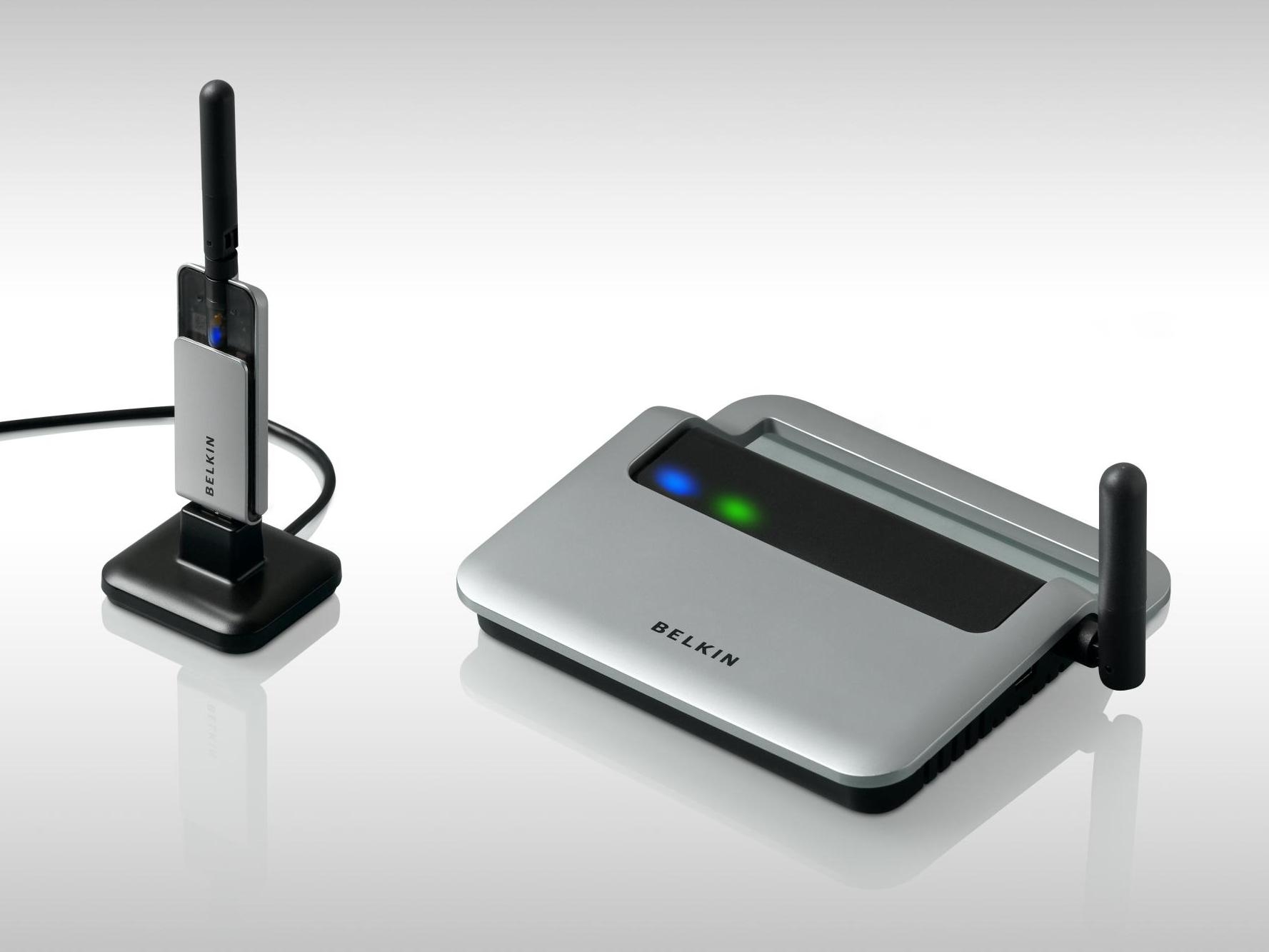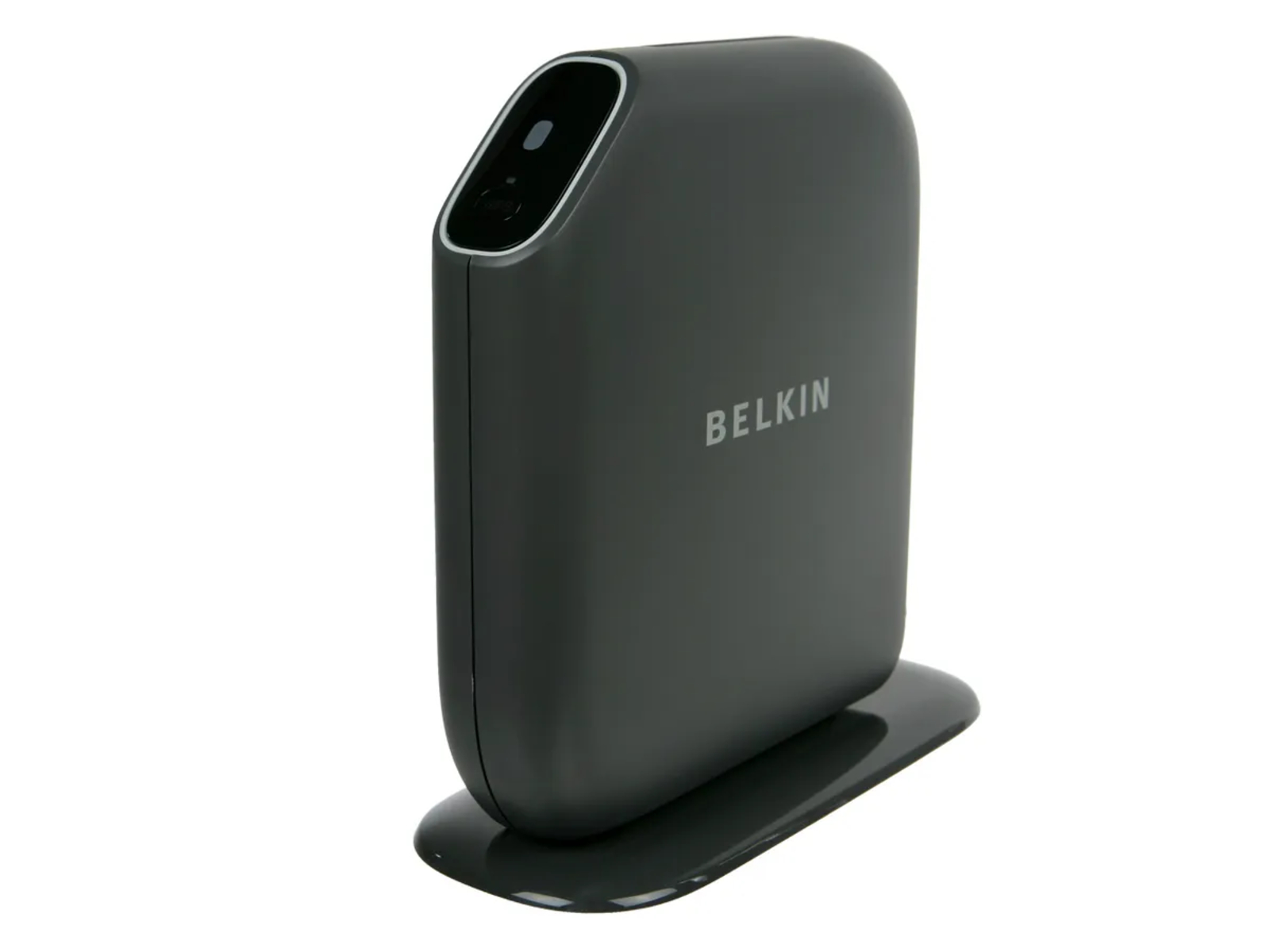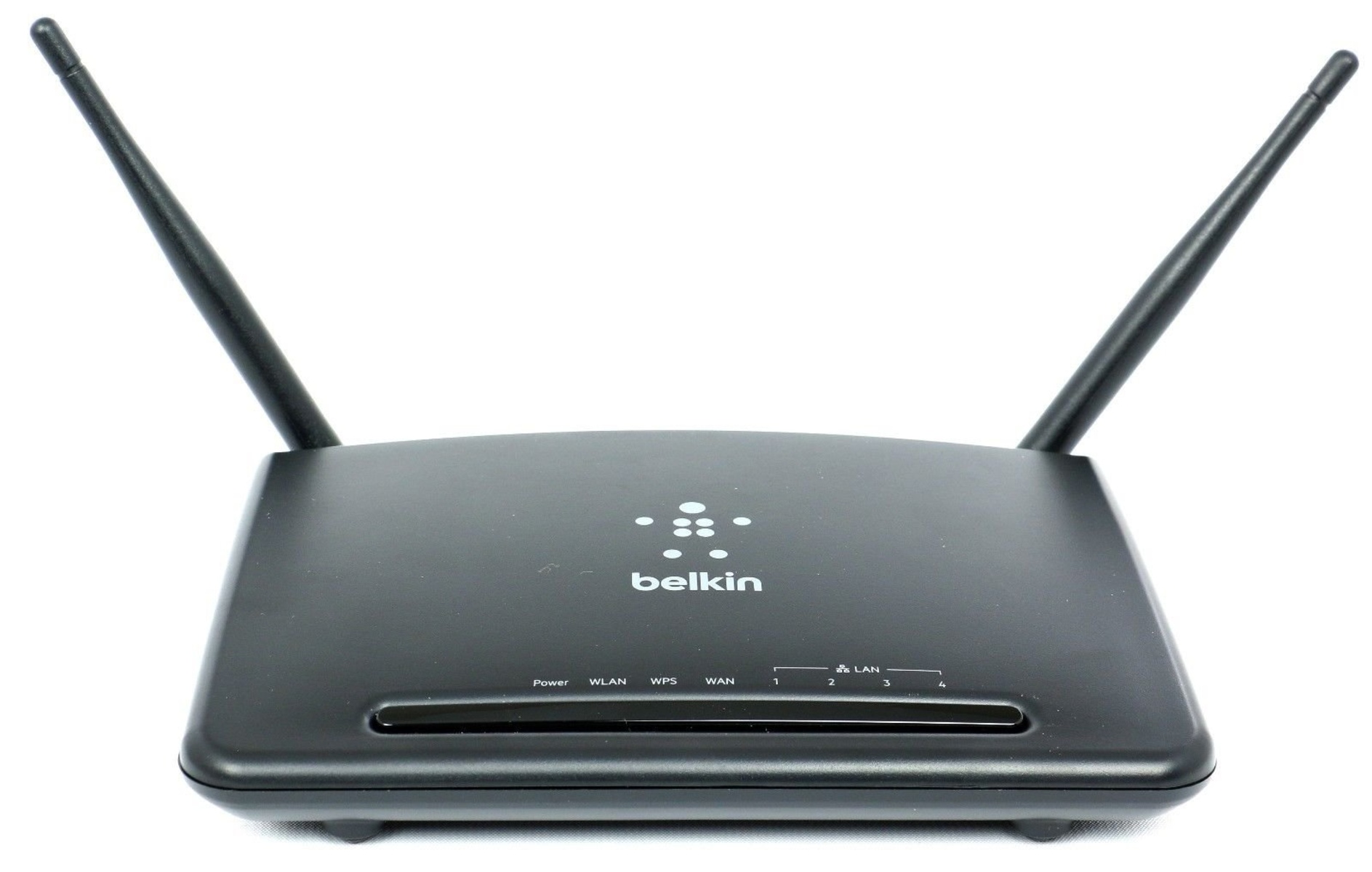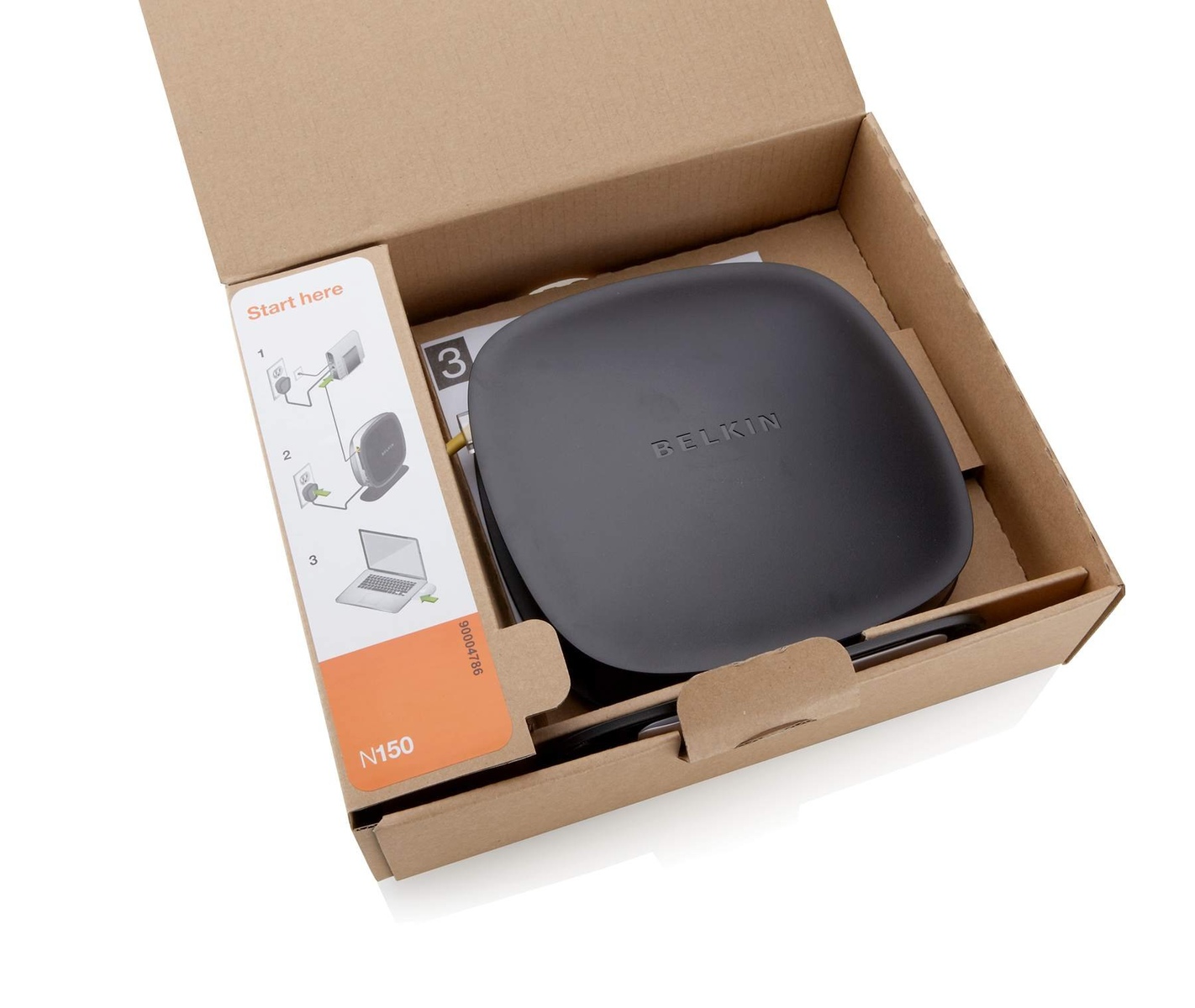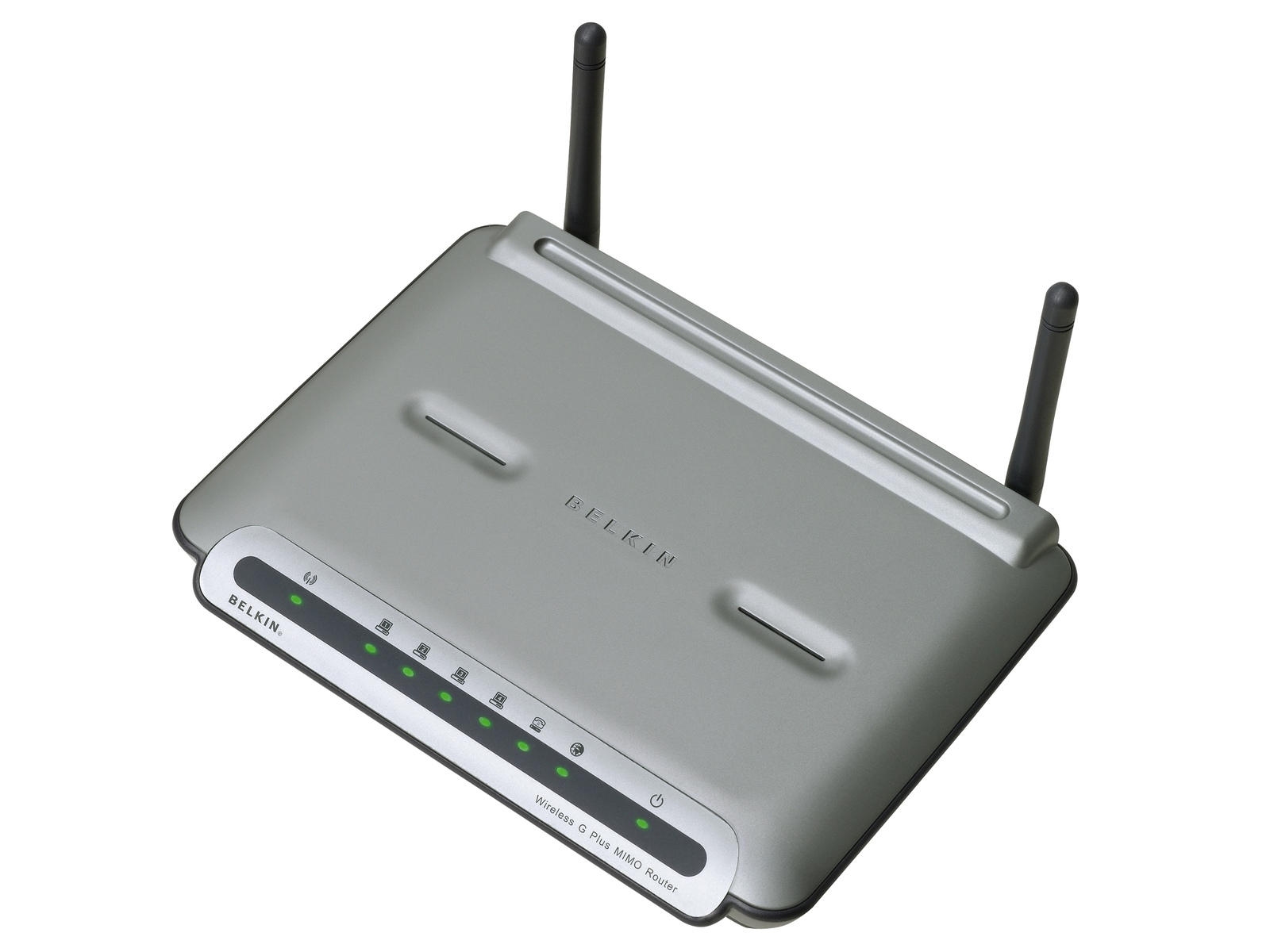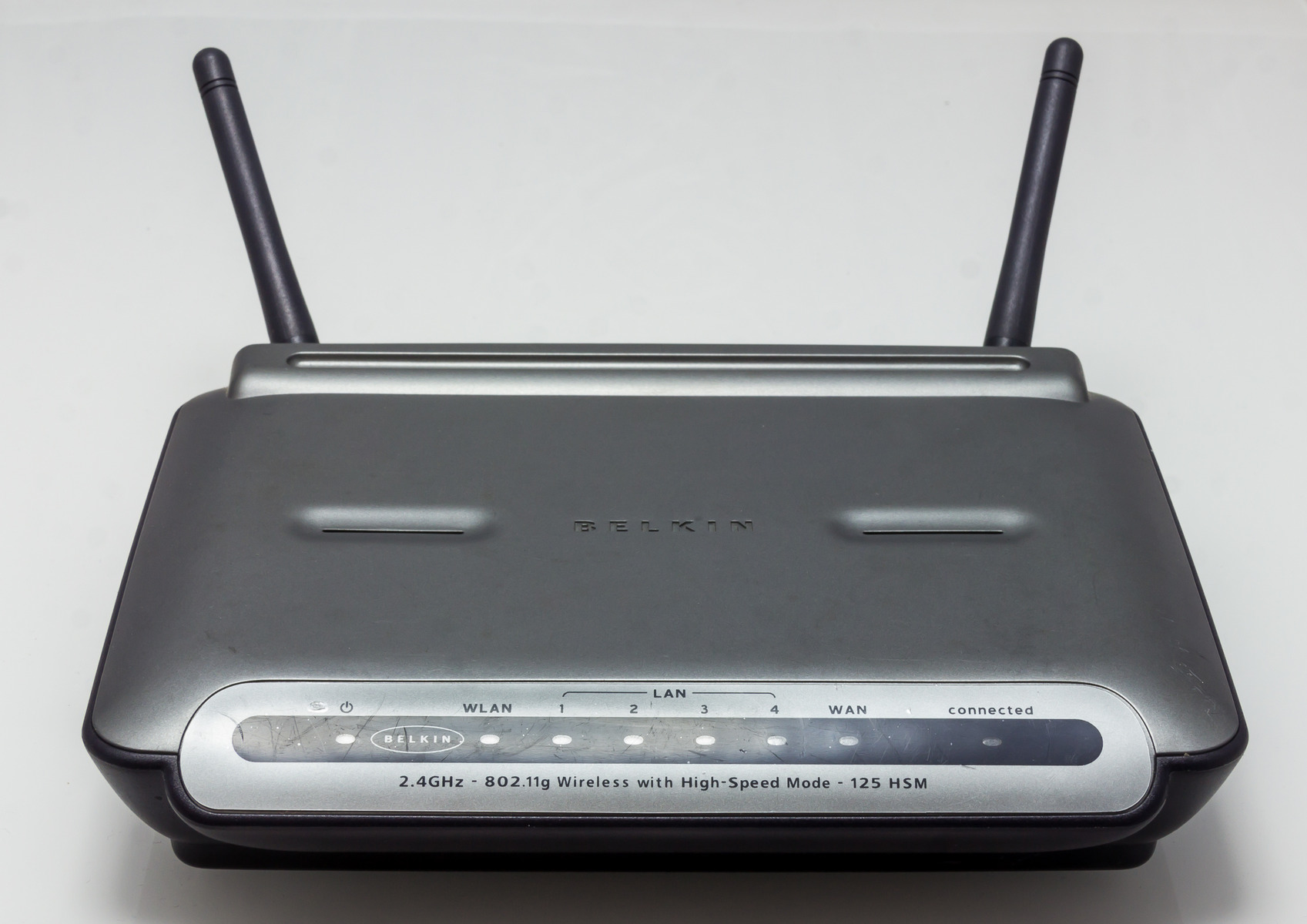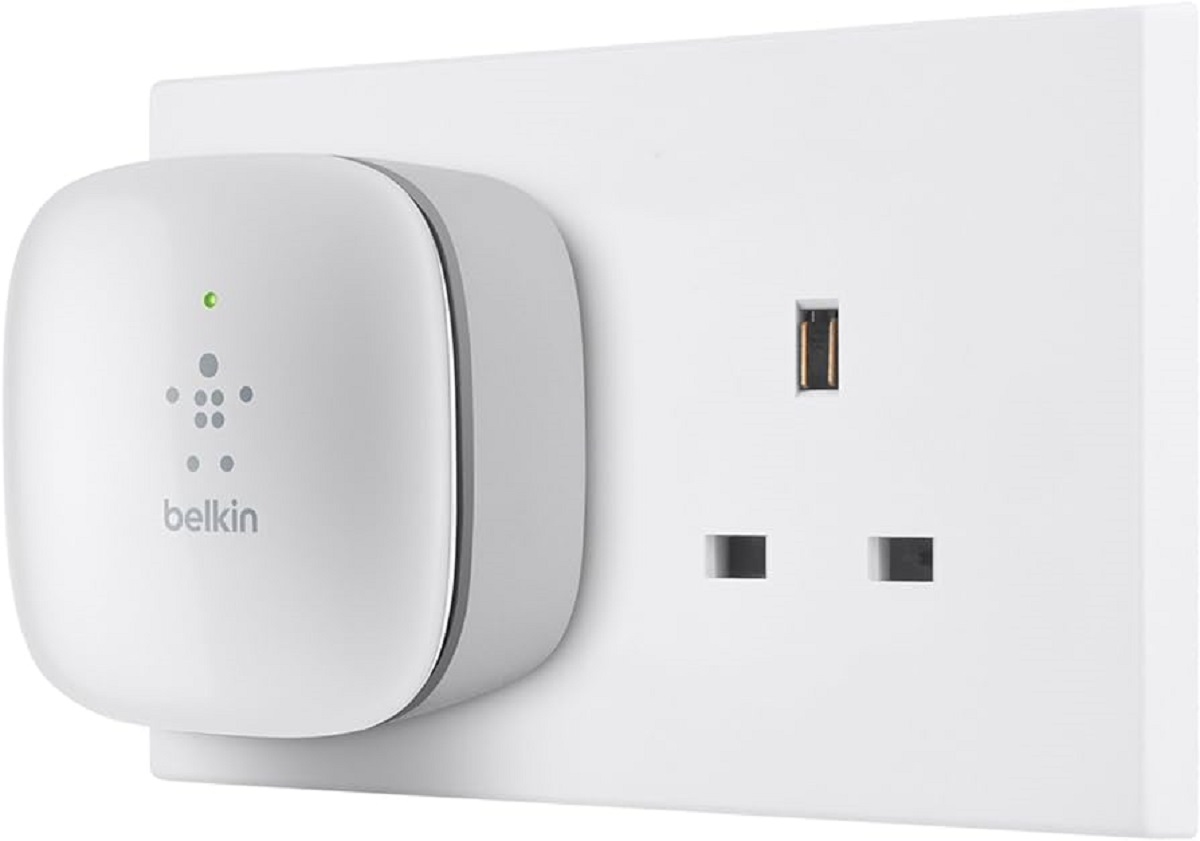Introduction
As wireless routers have become an essential part of our daily lives, it’s crucial to ensure the security of our network to protect our personal information and prevent unauthorized access. Belkin wireless routers offer a range of security features that can be enabled to enhance the protection of your network.
In this guide, we will provide you with step-by-step instructions on how to make your Belkin wireless router more secure. By following these measures, you can safeguard your network from potential threats and have peace of mind knowing that your data is well-protected.
It is important to note that every Belkin router model may have slightly different settings and configurations. Therefore, it’s essential to consult your router’s manual or access the online support resources provided by Belkin for specific instructions.
Now, let’s dive into the various steps you can take to bolster the security of your Belkin wireless router and ensure a safe browsing experience for yourself and your family.
Step 1: Change the Default Username and Password
One of the most critical steps in securing your Belkin wireless router is changing the default username and password. Hackers often exploit routers with default login credentials to gain unauthorized access to the network. By changing these credentials, you significantly reduce the risk of an intrusion.
To change the username and password, follow these steps:
- Connect your device (laptop, smartphone, etc.) to your Belkin router’s network.
- Open a web browser and enter the default IP address of your Belkin router (usually 192.168.2.1 or 192.168.1.1) into the address bar.
- You will be directed to the Belkin router’s login page. Enter the default username and password (usually “admin” for both) to log in.
- Navigate to the “Router Settings” or “Administration” section in the router’s web-based interface.
- Locate the options to change the username and password. Enter a strong and unique username and password of your choice.
- Save the changes and log out of the router’s interface.
It is crucial to select a strong and complex password that includes a combination of uppercase and lowercase letters, numbers, and symbols. Use a password manager to generate and securely store this password to avoid forgetting it.
By changing the default username and password, you decrease the likelihood of unauthorized access to your Belkin router and network, thus bolstering its overall security.
Step 2: Enable WPA2 or WPA3 Encryption
Enabling Wi-Fi Protected Access (WPA2) or the latest WPA3 encryption on your Belkin wireless router is essential in safeguarding your network from potential security breaches. Encryption scrambles the data transmitted between devices, making it nearly impossible for hackers to intercept and decipher.
To enable WPA2 or WPA3 encryption on your Belkin router, follow these steps:
- Access your Belkin router’s web-based interface by typing the router’s IP address into a web browser.
- Login with the username and password you set in the previous step.
- Navigate to the “Wireless” or “Security” section.
- Look for the “Security Mode” or “Encryption” option and select either “WPA2” or “WPA3” from the drop-down menu.
- Choose a strong passphrase or pre-shared key (PSK) for your Wi-Fi network. Make sure it includes a combination of letters, numbers, and symbols.
- Save the changes and allow your router to apply the new encryption settings.
Enabling WPA2 or WPA3 encryption creates a secure channel for communication between your devices and the router, making it significantly more challenging for unauthorized individuals to access your network. It is important to note that WPA3 is the newest and most secure encryption method, so if your devices support it, it is recommended to select WPA3.
By enabling WPA2 or WPA3 encryption, you ensure that the data transmitted over your Wi-Fi network remains encrypted and protected, adding an extra layer of security to your Belkin wireless router.
Step 3: Update the Router’s Firmware
Regularly updating your Belkin router’s firmware is crucial for maintaining its security and ensuring optimal performance. Firmware updates often contain patches and security fixes that address vulnerabilities discovered by the manufacturer. By keeping your router’s firmware up to date, you can protect against potential exploits and minimize the risk of unauthorized access.
To update your Belkin router’s firmware, follow these steps:
- Access the router’s web-based interface using your web browser and router’s IP address.
- Log in with your router’s username and password.
- Check the “System” or “Advanced” section for a “Firmware Update” or “Router Update” option.
- If an update is available, download the latest firmware from the Belkin website or through the router’s interface.
- Click on the “Browse” or “Choose File” button to locate and select the downloaded firmware file.
- Initiate the update process and wait for it to complete. Avoid interrupting the process to prevent any potential damage to your router.
- Once the firmware update is finished, restart your router.
It is important to note that during the firmware update process, your router may temporarily lose connectivity. It is recommended to perform the update during a time when internet access is not critical.
Regularly checking for and installing firmware updates ensures that your Belkin router is equipped with the latest security enhancements and bug fixes. This proactive approach helps protect your network and keeps your router functioning optimally.
Step 4: Disable Remote Management
Disabling remote management on your Belkin wireless router is an important step in bolstering its security. Remote management allows users to access and configure the router’s settings from outside the local network. However, leaving this feature enabled can leave your router vulnerable to unauthorized access by potential hackers.
To disable remote management on your Belkin router, follow these steps:
- Access your router’s web-based interface using your preferred web browser and the router’s IP address.
- Log in using your router’s username and password.
- Locate the “Remote Management” or “Remote Access” option in the router’s settings.
- If remote management is enabled, toggle the setting to disable it.
- Save the changes and log out of the router’s interface.
By disabling remote management, you restrict access to the router’s settings only to devices connected to the local network. This prevents outside parties from attempting to exploit vulnerabilities or make unauthorized changes to your Belkin router.
It is important to note that if you ever need to make configuration changes to your router remotely, you will need to enable and set up a secure method such as a Virtual Private Network (VPN) to access the router’s settings from outside the network.
By disabling remote management, you add an extra layer of protection to your Belkin router, reducing the potential for unauthorized access and enhancing the overall security of your network.
Step 5: Enable MAC Address Filtering
Enabling MAC address filtering on your Belkin wireless router adds an additional layer of security by allowing only specified devices to connect to your network. MAC (Media Access Control) addresses are unique identifiers assigned to each network device, such as computers, smartphones, and tablets.
By enabling MAC address filtering, you can specify which devices are authorized to connect to your Belkin router. Any device with a MAC address not on the approved list will be denied access to your network.
To enable MAC address filtering on your Belkin router, follow these steps:
- Access your router’s web-based interface by entering the router’s IP address into your preferred web browser.
- Login using your router’s username and password.
- Navigate to the “Wireless” or “Security” settings section.
- Look for the “MAC Address Filtering” or “Allow List” option.
- Enable MAC address filtering and add the MAC addresses of the devices you want to allow on your network. You can typically find the MAC address in the device’s network settings or on the device’s label.
- Save the changes and log out of the router’s interface.
It is important to note that enabling MAC address filtering can be time-consuming, especially if you have numerous devices on your network. However, it provides an extra layer of control over who can access your network, reducing the risk of unauthorized access.
Keep in mind that MAC address filtering is not foolproof and can be bypassed by experienced hackers. Therefore, it is important to combine this security measure with other strategies, such as strong encryption and secure passwords, to ensure comprehensive network security.
By enabling MAC address filtering, you restrict access to your Belkin router’s network, allowing only approved devices to connect and increasing the overall security of your network.
Step 6: Disable UPnP
UPnP (Universal Plug and Play) is a networking protocol that allows devices on a network to discover and communicate with each other seamlessly. Although UPnP offers convenience and ease of use, it can also pose a security risk if left enabled on your Belkin wireless router.
Disabling UPnP on your router prevents potential intruders from exploiting the protocol and gaining unauthorized access to your network or devices.
To disable UPnP on your Belkin router, follow these steps:
- Access your router’s web-based interface using your preferred web browser and the router’s IP address.
- Login using your router’s username and password.
- Navigate to the “Administration” or “Advanced” settings section.
- Look for the “UPnP” or “Enable Universal Plug and Play” option.
- Disable UPnP by toggling the setting to the “Off” position.
- Save the changes and log out of the router’s interface.
By disabling UPnP, you prevent devices on your network from automatically opening ports and creating potential entry points for hackers. While disabling UPnP might require manual configuration for certain network applications, it significantly reduces the risk of unauthorized access to your Belkin router.
It is worth noting that some older devices and applications may rely on UPnP for proper network functionality. In such cases, consider manually forwarding the necessary ports and allowing access on a case-by-case basis, rather than enabling UPnP overall.
By disabling UPnP, you enhance the security of your Belkin router, reducing the potential for unauthorized access and ensuring that you have control over your network’s port settings.
Step 7: Change the Default SSID
The SSID (Service Set Identifier) is the name of your Belkin wireless router’s network. By default, routers often come with a generic SSID, which can make it easier for attackers to identify and target your network.
To enhance the security of your Belkin router, it is essential to change the default SSID to a unique and custom name. Here’s how you can do it:
- Access your Belkin router’s web-based interface by typing the router’s IP address into your web browser.
- Login using your router’s username and password.
- Navigate to the “Wireless” or “Wi-Fi” settings section.
- Find the field labeled “SSID” or “Network Name.”
- Enter a new, unique name for your network. Avoid using personal information or easily identifiable details in the SSID.
- Save the changes and log out of the router’s interface.
When choosing a new SSID, consider using a combination of letters, numbers, and symbols to make it more difficult for unauthorized users to identify your network. Additionally, avoid using common names or broadcasting information that could reveal personal or sensitive details.
Changing the default SSID adds a layer of anonymity to your network, making it more challenging for potential attackers to identify and target your Belkin router.
After changing the SSID, remember to update the network name on all devices that connect to your network to ensure a seamless connection.
By customizing your SSID, you make it more difficult for unauthorized users to identify your network, improving the overall security of your Belkin router.
Step 8: Disable Guest Network (if applicable)
If your Belkin wireless router provides a guest network feature, it is crucial to evaluate whether it is necessary for your specific use case. While guest networks can be convenient for visitors, leaving them enabled can introduce potential security risks to your network.
Guest networks provide a separate Wi-Fi network for guests to use, keeping their devices isolated from your primary network. However, if not properly secured, guest networks can be abused by attackers or unauthorized users to gain access to your network or conduct malicious activities.
To disable the guest network on your Belkin router, follow these steps:
- Access your router’s web-based interface using your web browser and the router’s IP address.
- Login using your router’s username and password.
- Navigate to the “Guest Network” or “Guest Access” settings section.
- Disable the guest network feature by toggling the setting to the “Off” position.
- Save the changes and log out of the router’s interface.
Disabling the guest network ensures that only trusted individuals with credentials can access your primary network, minimizing the risk of unauthorized access or potential attacks.
If you need to provide temporary network access for guests, consider creating a separate network using a dedicated router or a network extender that is segregated from your primary network.
Remember that it’s important to regularly review and update your router’s settings, including the guest network feature, to maintain the security of your network and protect your data.
By disabling the guest network, you eliminate the potential risks associated with unauthorized access and maintain better control over your Belkin wireless router’s security.
Step 9: Set a Strong Wireless Password
Setting a strong wireless password for your Belkin wireless router is crucial for protecting your network from unauthorized access and ensuring the security of your data. A strong password acts as a barrier, making it difficult for attackers to guess or brute-force their way into your network.
To set a strong wireless password for your Belkin router, follow these steps:
- Access your router’s web-based interface using your preferred web browser and the router’s IP address.
- Login using your router’s username and password.
- Navigate to the “Wireless” or “Wi-Fi” settings section.
- Look for the “Password” or “Passphrase” field.
- Choose a strong and unique password. Make sure it includes a combination of uppercase and lowercase letters, numbers, and special characters.
- Save the changes and log out of the router’s interface.
It is important to note that using a common or easily guessable password can make your network vulnerable to attacks. Avoid using personal information, dictionary words, or easily identifiable patterns in your password.
It is recommended to change your wireless password periodically, especially if you suspect it may have been compromised or if you have shared it with others who no longer require access to your network.
By setting a strong wireless password, you significantly increase the security of your Belkin router, making it more difficult for unauthorized users to gain access to your network and compromising your data.
Step 10: Disable Wi-Fi Protected Setup (WPS)
Wi-Fi Protected Setup (WPS) is a feature designed to simplify the process of connecting devices to a Wi-Fi network. While convenient, the WPS method can also be susceptible to security vulnerabilities that can compromise your Belkin wireless router.
Disabling WPS on your router is an important step in safeguarding your network from potential attacks. Here’s how you can do it:
- Access your router’s web-based interface by typing the router’s IP address into your preferred web browser.
- Login using your router’s username and password.
- Navigate to the “Wireless” or “Wi-Fi” settings section.
- Locate the “WPS” or “Wi-Fi Protected Setup” option.
- Disable WPS by toggling the setting to the “Off” position.
- Save the changes and log out of the router’s interface.
Disabling WPS eliminates potential security risks associated with brute force attacks and unauthorized access attempts. It is worth noting that some older devices may rely on WPS for network configuration.
If you have any older devices that require WPS, consider manually configuring them by entering the network password rather than relying on the WPS feature.
By disabling WPS, you ensure that your Belkin router is not susceptible to WPS-related vulnerabilities, thus enhancing the security of your network and protecting confidential information.
Conclusion
In conclusion, securing your Belkin wireless router is essential to protect your network and personal information from potential threats. By following the steps outlined in this guide, you can significantly enhance the security of your router and enjoy a safer browsing experience.
Changing the default username and password ensures that unauthorized individuals cannot easily gain access to your router’s settings. Enabling WPA2 or WPA3 encryption provides robust data protection by encrypting the communication between devices. Updating your router’s firmware regularly helps keep it up to date with the latest security patches and performance enhancements.
Disabling remote management minimizes the risk of unauthorized changes to your router’s settings from outside your network. Enabling MAC address filtering only allows approved devices to connect to your network. Disabling UPnP prevents potential attackers from exploiting the protocol for unauthorized access or malicious activities.
Changing the default SSID adds an extra layer of anonymity to your network, making it more challenging for potential attackers to identify and target your router. Disabling the guest network feature prevents unauthorized access to your primary network.
Setting a strong wireless password and disabling Wi-Fi Protected Setup (WPS) further strengthen the security of your Belkin router by making it more difficult for attackers to gain unauthorized access.
It’s important to remember that network security is an ongoing effort. Regularly review and update your router’s settings, keep firmware up to date, and employ best practices such as strong passwords and safe browsing habits.
By implementing the security measures outlined in this guide, you can significantly enhance the protection of your Belkin wireless router, safeguard your network, and enjoy peace of mind knowing that your data and privacy are well-secured.







